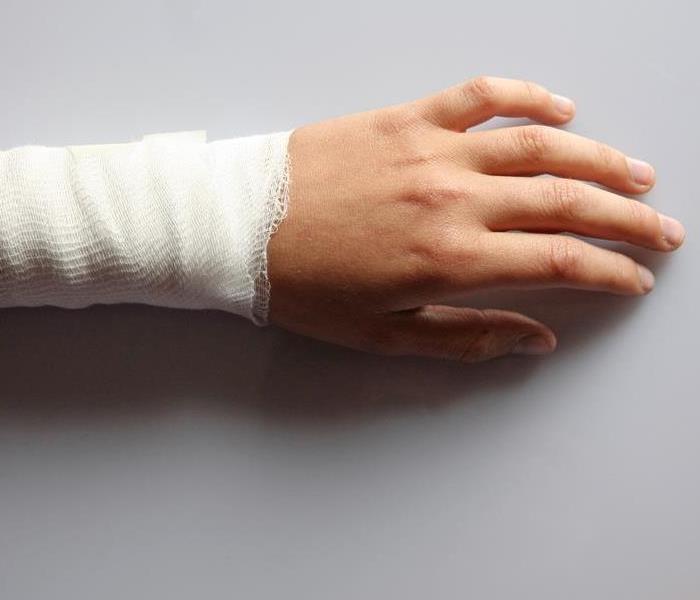Basic First Aid for Burns: How to Provide Immediate Care for Different Types of Burns
8/3/2023 (Permalink)
 Knowing the difference in the types of first aid burns can make a difference in the care after a burn.
Knowing the difference in the types of first aid burns can make a difference in the care after a burn.
Burns can happen in an instant and can range from minor to severe. Knowing how to provide basic first aid for burns is essential to minimize pain, prevent infection, and promote faster healing. In this blog post, we'll discuss the different types of burns and provide a step-by-step guide on how to administer basic first aid for each type.
First-Degree Burns
These burns affect only the outer layer of the skin and typically result in redness, pain, and mild swelling. They may be caused by sunburns, minor scalds, or brief contact with a hot object.
- Remove the source of the burn, such as taking the affected area away from the hot object or rinsing the burned skin with cool running water.
- Cool the burn by holding it under cool running water for 10-15 minutes. Do not use ice as it can cause further damage.
- Cover the burn with a sterile non-stick dressing or clean cloth to protect against infection.
- Take over-the-counter pain relievers, like ibuprofen, to help alleviate pain and reduce inflammation.
- Avoid popping any blisters that may form.
- Seek medical attention if the burn covers a large area, is on the face, hands, feet, genitals, or if the person is experiencing severe pain or signs of infection.
Second-Degree Burns
These burns involve both the outer layer and the underlying layer of the skin. They are more severe and can cause blisters, redness, swelling, and intense pain. They may be caused by hot liquids, flames, or prolonged contact with a hot object.
- Ensure the person and you are safe from further harm. If necessary, use a fire extinguisher or smother flames with a blanket.
- Cool the burn by running it under cool water for 10-20 minutes. Do not use ice or very cold water.
- Remove any clothing or jewelry near the burned area, as swelling may occur.
- Wrap the burn loosely in a clean, dry cloth or sterile non-stick dressing.
- Over-the-counter pain relievers can be taken to manage pain and reduce swelling.
- Seek medical attention for second-degree burns larger than three inches in diameter, burns on the face, hands, feet, or genital area, or if the person is experiencing severe pain, signs of infection, or difficulty breathing.
Third-Degree Burns
These burns are the most severe and affect all layers of the skin. They may appear charred or white, and the damaged skin may be numb due to nerve damage. Third-degree burns require immediate medical attention and may be caused by flames, chemicals, or electrical sources.
- Call emergency services immediately.
- Ensure the person and you are safe from further harm. If necessary, use a fire extinguisher or smother flames with a blanket.
- Do not use water to cool the burn.
- Cover the burn loosely with a clean, dry cloth or sterile non-stick dressing.
- Elevate the burned area if possible.
- Never attempt to remove anything stuck to the burn.
- Monitor the person's breathing and provide CPR if necessary, or until medical help arrives.
Remember, first aid for burns is essential, but it's crucial to seek medical attention for severe burns. These guidelines provide initial care and should not replace professional medical advice.
Knowing how to provide basic first aid for burns can make a significant difference in the immediate care and well-being of someone who has been burned. By following these steps for first-degree, second-degree, and third-degree burns, you can help alleviate pain, prevent infection, and promote faster healing. Remember, when in doubt, always seek medical attention for severe burns.

 24/7 Emergency Service
24/7 Emergency Service